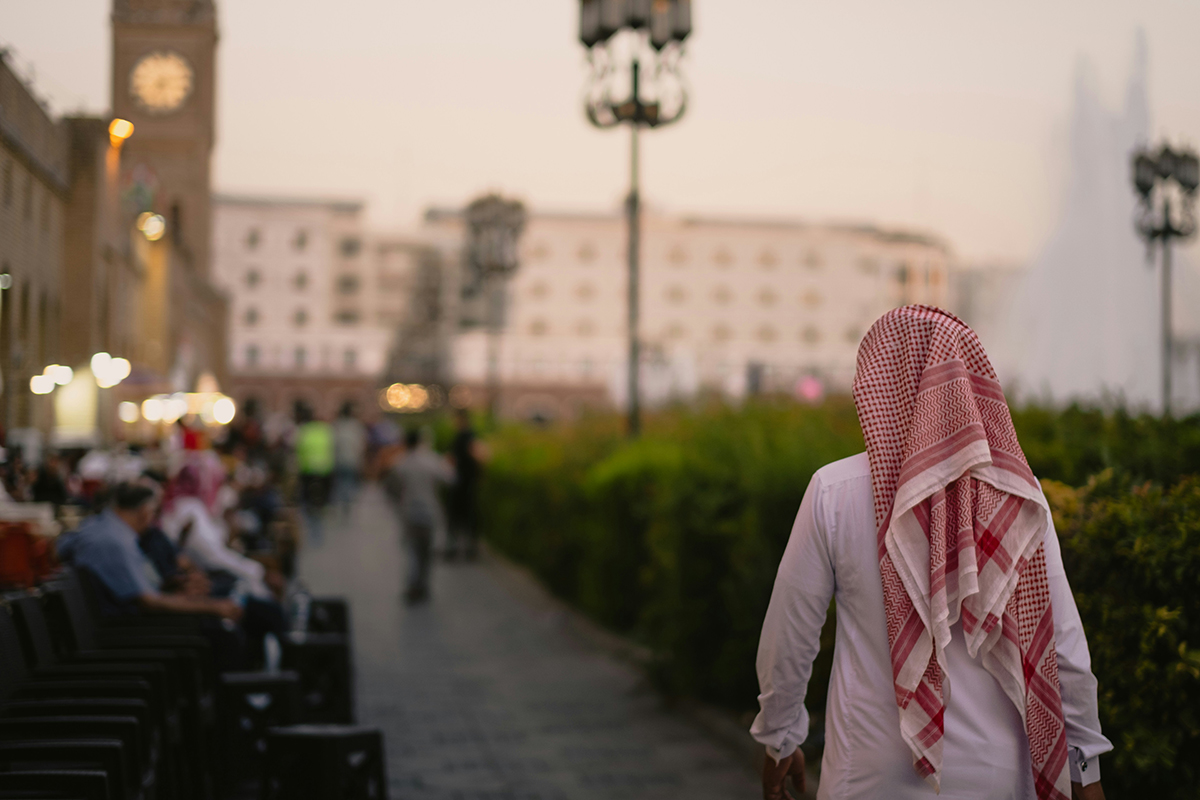
April is Arab American Heritage Month, a time to recognize the rich cultural, linguistic, and historical contributions of Arab Americans. The term Arab refers to a shared language and cultural identity, encompassing a diverse range of communities across 22 countries in the Middle East and North Africa. Arab identity is not defined by race or religion—Arabs may be Muslim, Christian, Jewish, or of other faiths—and Arab Americans trace their roots to places such as Lebanon, Syria, Palestine, Egypt, Yemen, and Iraq.
This month’s selections explore the literature, history, and lived experiences of the Arab world and its diaspora, offering insight into its complexity, creativity, and resilience.
Each month, "Discover & Discuss" presents a fresh theme designed to inform, inspire, and connect our community with a curated selection of books and digital resources that invite deeper thinking and dialogue.
Special thanks to our Materials Processing Coordinator, Leah Zande, for compiling this list. Additional resources [.pdf] have been provided by Gale Publishing. Learn more on the Center for Student Diversity and Inclusion website. Feature image by Levi Meir Clancy on Unsplash.
Kitchen Arabic: How My Family Came to America and the Recipes We Brought With Us
Geha, Joseph (2023)
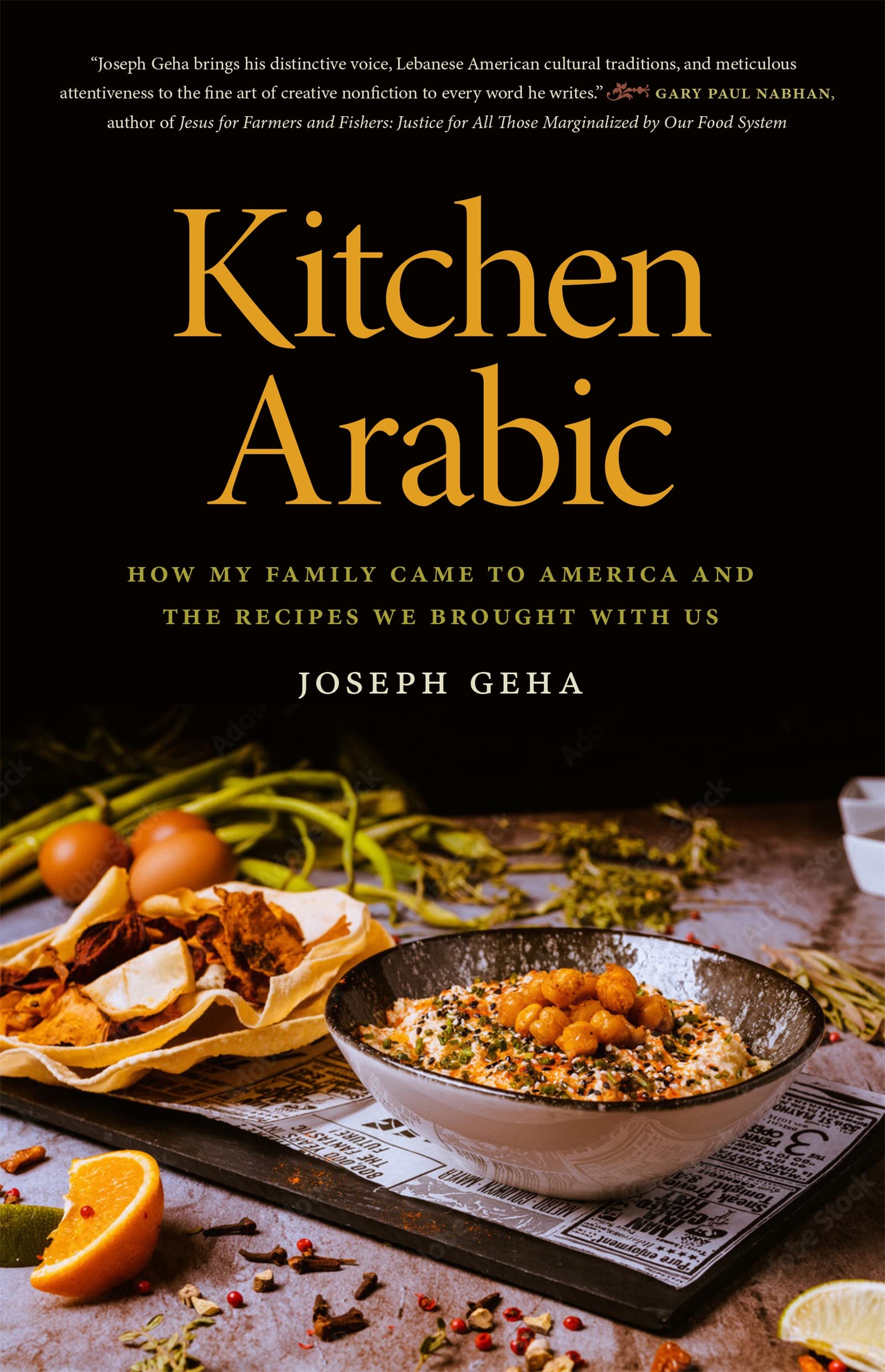 Immigrant children first speak the language of their mothers, and in Toledo, Ohio’s Little Syria neighborhood where Joseph Geha grew up, the first place he would go to find his mother would be the kitchen. Many of today’s immigrants use Skype to keep in touch with folks back in the old country but in those “radio days” of old before the luxuries of hot running water or freezers, much less refrigeration, blenders, or microwaves, the kitchen was where an immigrant mother usually had to be, snapping peas or rolling grape leaves while she waited for the dough to rise. There, Geha’s mother took special pride in the traditional Syro-Lebanese food she cooked, such as stuffed eggplant, lentil soup, kibbeh with tahini sauce, shish barak, and fragrant sesame cookies.
Immigrant children first speak the language of their mothers, and in Toledo, Ohio’s Little Syria neighborhood where Joseph Geha grew up, the first place he would go to find his mother would be the kitchen. Many of today’s immigrants use Skype to keep in touch with folks back in the old country but in those “radio days” of old before the luxuries of hot running water or freezers, much less refrigeration, blenders, or microwaves, the kitchen was where an immigrant mother usually had to be, snapping peas or rolling grape leaves while she waited for the dough to rise. There, Geha’s mother took special pride in the traditional Syro-Lebanese food she cooked, such as stuffed eggplant, lentil soup, kibbeh with tahini sauce, shish barak, and fragrant sesame cookies.
As much a memoir as a cookbook, "Kitchen Arabic" illustrates the journey of Geha’s early years in America and his family’s struggle to learn the language and ways of a new world. A compilation of family recipes and of the stories that came with them, it deftly blends culture with cuisine. In her kitchen, Geha’s mother took special pride in the Arabic dishes she cooked, cherishing that aspect of her heritage that, unlike language, has changed very little over time and distance. With this book, Geha shares how the food of his heritage sustained his family throughout that cultural journey, speaking to them―in a language that needs no translation―of joy and comfort and love. - Publisher's Description
Request this Title
Sacred Language, Vernacular Difference: Global Arabic and Counter-Imperial Literatures
Lienau, Annette Damayanti (2024)
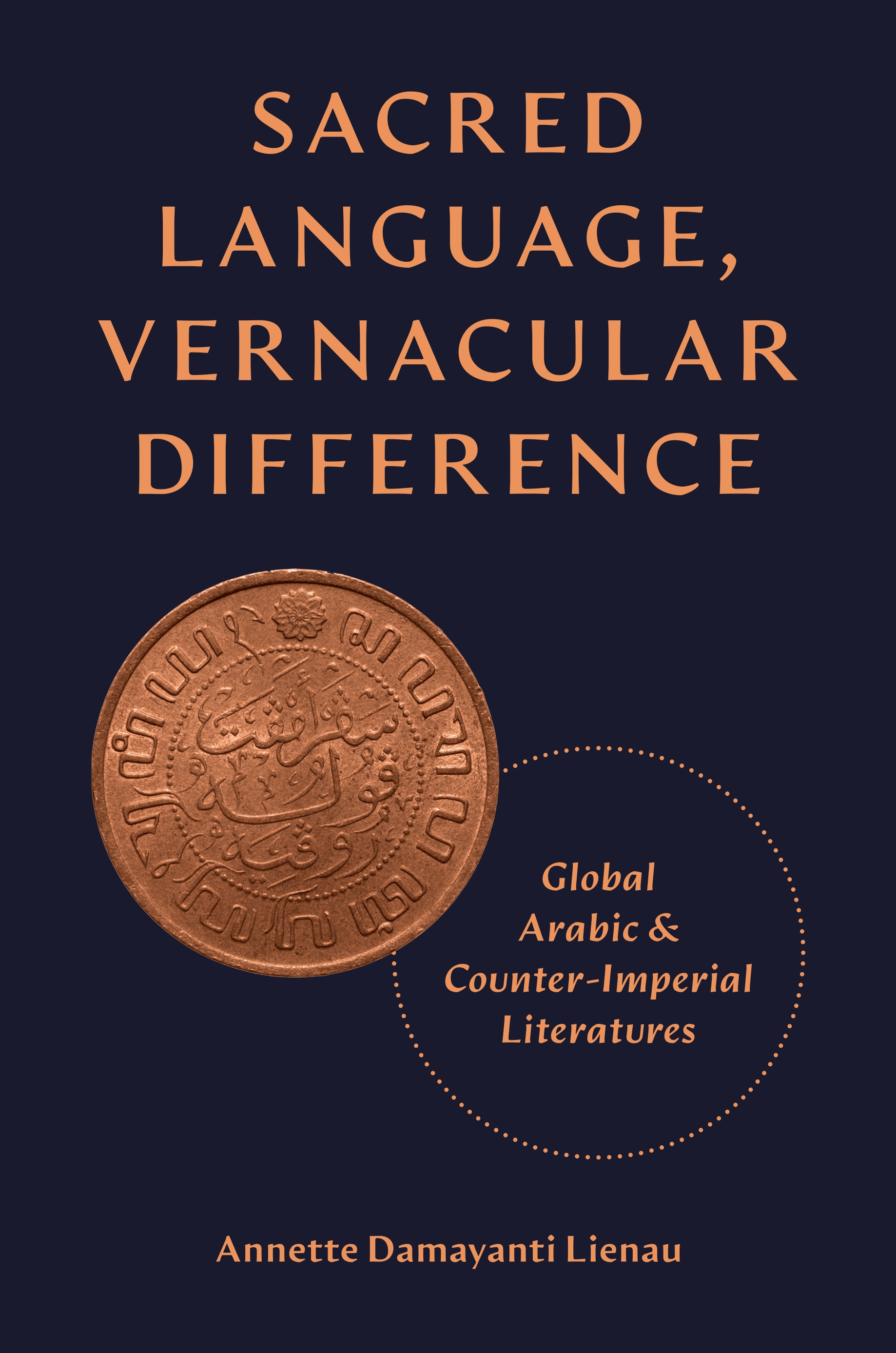 "Sacred Language, Vernacular Difference" offers a new understanding of Arabic’s global position as the basis for comparing cultural and literary histories in countries separated by vast distances. By tracing controversies over the use of Arabic in three countries with distinct colonial legacies, Egypt, Indonesia, and Senegal, the book presents a new approach to the study of postcolonial literatures, anticolonial nationalisms, and the global circulation of pluralist ideas.
"Sacred Language, Vernacular Difference" offers a new understanding of Arabic’s global position as the basis for comparing cultural and literary histories in countries separated by vast distances. By tracing controversies over the use of Arabic in three countries with distinct colonial legacies, Egypt, Indonesia, and Senegal, the book presents a new approach to the study of postcolonial literatures, anticolonial nationalisms, and the global circulation of pluralist ideas.
Annette Damayanti Lienau presents the largely untold story of how Arabic, often understood in Africa and Asia as a language of Islamic ritual and precolonial commerce, assumed a transregional role as an anticolonial literary medium in the nineteenth and twentieth centuries. By examining how major writers and intellectuals across several generations grappled with the cultural asymmetries imposed by imperial Europe, Lienau shows that Arabic—as a cosmopolitan, interethnic, and interreligious language—complicated debates over questions of indigeneity, religious pluralism, counter-imperial nationalisms, and emerging nation-states.
Unearthing parallels from West Africa to Southeast Asia, "Sacred Language, Vernacular Difference" argues that debates comparing the status of Arabic to other languages challenged not only Eurocentric but Arabocentric forms of ethnolinguistic and racial prejudice in both local and global terms. - Publisher's Description
Request this Title
Language and Identity in the Arab World
Mehta, Sandhya Rao; Al Rashdi, Fathiya (2023)
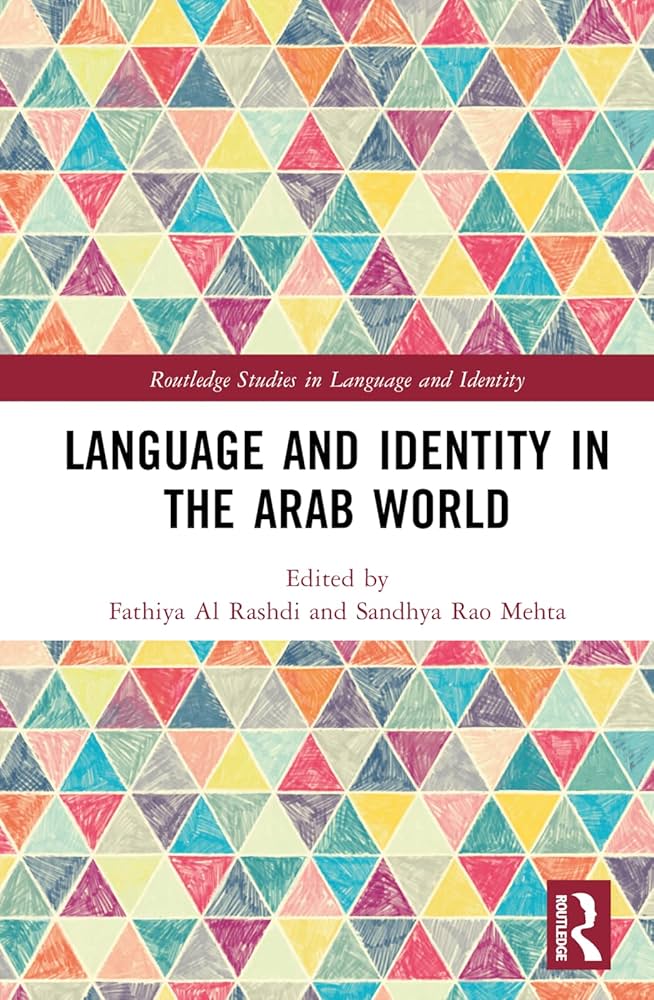 "Language and Identity in the Arab World" explores the inextricable link between language and identity, referring particularly to the Arab world. Spanning Indonesia to the United States, the Arab world is here imagined as a continually changing one, with the Arab diaspora asserting its linguistic identity across the world.
"Language and Identity in the Arab World" explores the inextricable link between language and identity, referring particularly to the Arab world. Spanning Indonesia to the United States, the Arab world is here imagined as a continually changing one, with the Arab diaspora asserting its linguistic identity across the world.
Crucial questions on transforming linguistic landscapes, the role and implications of migration, and the impact of technology on language use are explored by established and emerging scholars in the field of applied and socio-linguistics. The book asks such crucial questions as how language contact affects or transforms identity, how language reflects changing identities among migrant communities, and how language choices contribute to identity construction in social media. As well as appreciating the breadth and scope of the Arab world, this anthology focuses on the transformative role of language within indigenous and migrant communities as they negotiate between their heritage languages and those spoken by the wider society.
Investigating the ways in which identity continues to be imagined and re-constructed in and among Arab communities, this book is indispensable to students, teachers, and anyone who is interested in language contact, linguistic landscapes, and minority language retention as well as the intersections of language and technology. - Publisher's Description
Request this Title
Aswat Mu'asira: Short Stories for Advanced Arabic
Elbousty, Jonas; Allen, Roger (2023)
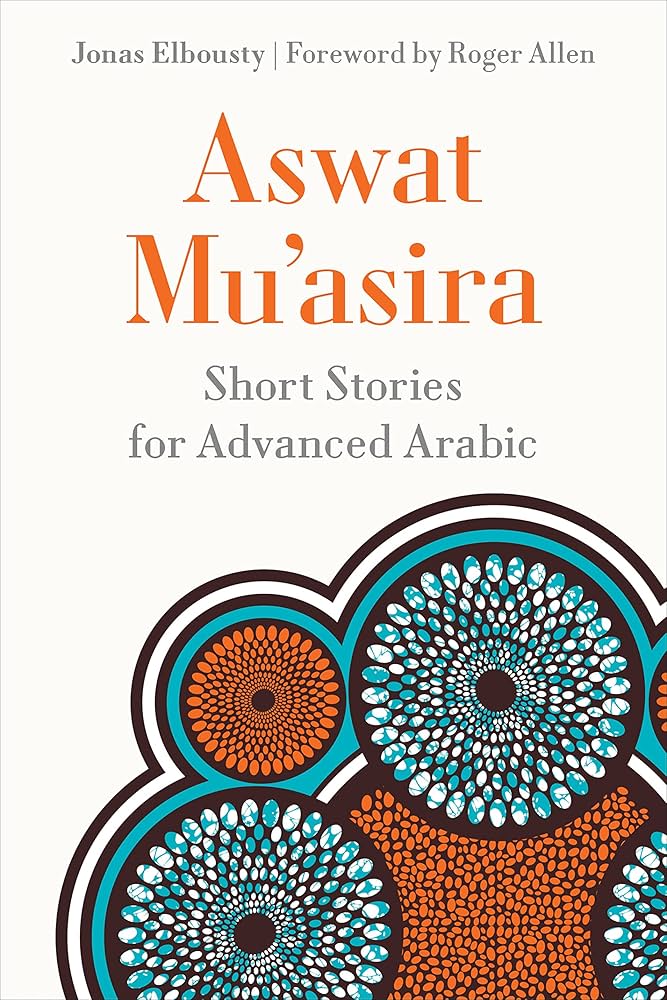 "Aswat Mu'asira" introduces advanced level students to contemporary short stories from across the Middle East. Fifty-five stories in Arabic from twenty countries engage students with current topics and literary approaches that open the door to discovering both established and emerging authors and literary traditions. The book includes voices from often overlooked Arabic-speaking countries and peoples, giving readers the opportunity to broaden their understanding of Arabic cultures.
"Aswat Mu'asira" introduces advanced level students to contemporary short stories from across the Middle East. Fifty-five stories in Arabic from twenty countries engage students with current topics and literary approaches that open the door to discovering both established and emerging authors and literary traditions. The book includes voices from often overlooked Arabic-speaking countries and peoples, giving readers the opportunity to broaden their understanding of Arabic cultures.
While most Arabic literature textbooks include only excerpts of longer works, the short stories in this collection are designed to be read in one sitting, giving students the opportunity to immerse themselves in a complete piece of literature. Stories are organized into chapters based on their country of origin. Each story is preceded by an author biography and followed by exercises to help students practice vocabulary and comprehension, explore the literary tradition, and master literary analysis.
Scholars of Arabic literature will also welcome these new stories, many of which are available outside the Middle East for the first time in this collection and expand the understanding of the short story and of contemporary literature from this important region. - Publisher's Description
Request this Title
Arab Youths: Leisure, Culture and Politics from Morocco to Yemen
Bonnefoy, Laurent; Catusse, Myriam (2023)
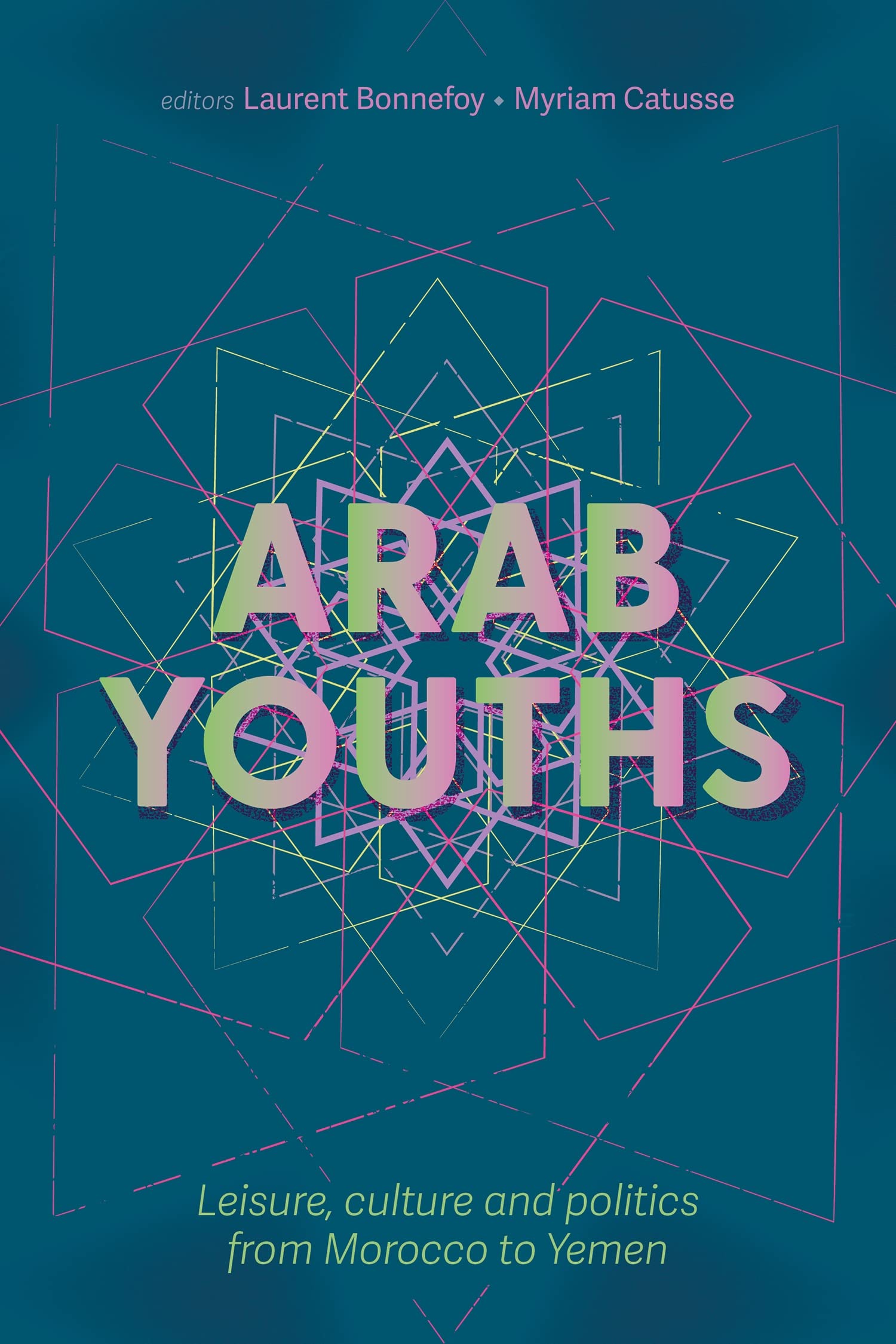 Young Arabs are too often reduced to the figures of the potential terrorist, the migrant or the exotic icon of the revolution. But the reality is much richer.
Young Arabs are too often reduced to the figures of the potential terrorist, the migrant or the exotic icon of the revolution. But the reality is much richer.
Coming from both sides of the Mediterranean, the researchers in this book travel off the beaten track by exploring how young Arabs spend their free time. The case studies take in a wide range of countries, including Morocco, Egypt, Syria, Iraq and Saudi Arabia, and all manner of activities, from football to rap music, café culture to sex work. Drawn with sensitivity and humour, Arab youths presents an exceptional portrait of a generation that is much talked about but rarely listened to.
This book gives a voice to young men and women who, as heirs of plural traditions, animated by new ideas and influenced by various cultural movements, are inventing the future of their societies in the midst of radical change. - Publisher's Description
Request this Title
Memes, Monsters, and the Digital Grotesque
Moreno- Almeida, Cristina (2024)
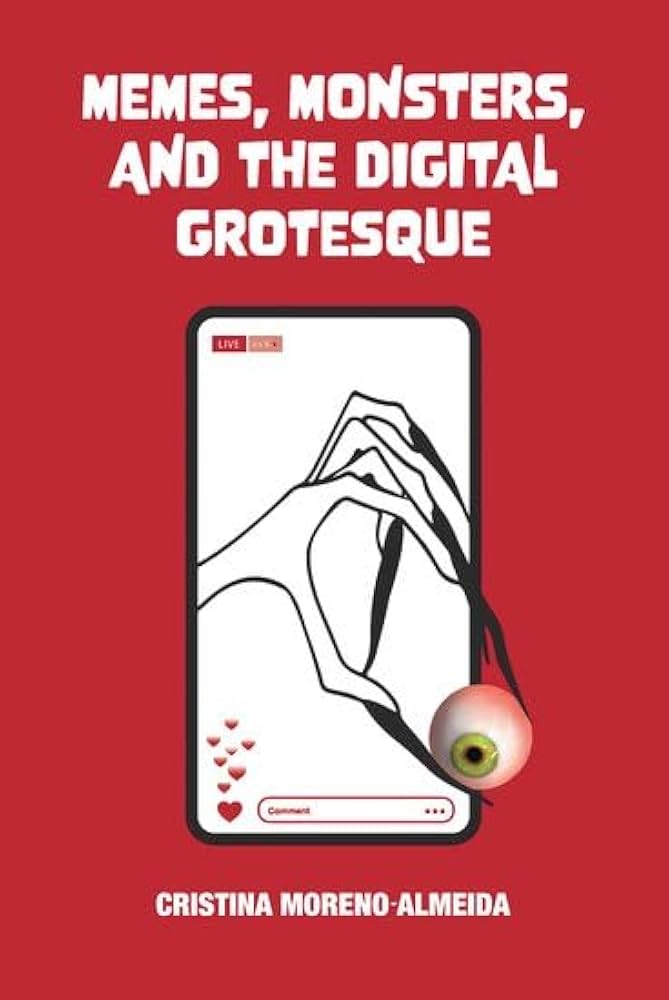 "Memes, Monsters, and the Digital Grotesque" looks at the emerging and thriving new genre of digital horror from an innovative perspective.
"Memes, Monsters, and the Digital Grotesque" looks at the emerging and thriving new genre of digital horror from an innovative perspective.
Examining digital cultural production during the period that has been referred to as the 'Arab Winter', Moreno-Almeida delves into the memes, animated cartoons, music videos, and expressive cultures ^―^ like fashion and urban subcultures ^―^ that emerged between 2016 and 2020.
In revealing concealed narratives underlying the digital lives of artists, as well as ordinary people, Moreno-Almeida explores how memes, horror, and the grotesque capture a moment infused with political and affective significance, characterized by despair, alienation, and anomie, alongside opportunities for creative experimentation made possible in the postdigital era. - Publisher's Description
Request this Title
Approaches to Arabic Popular Culture
Wiedemann, Felix; Konerding, Peter; Behzadi, Lale (2021)
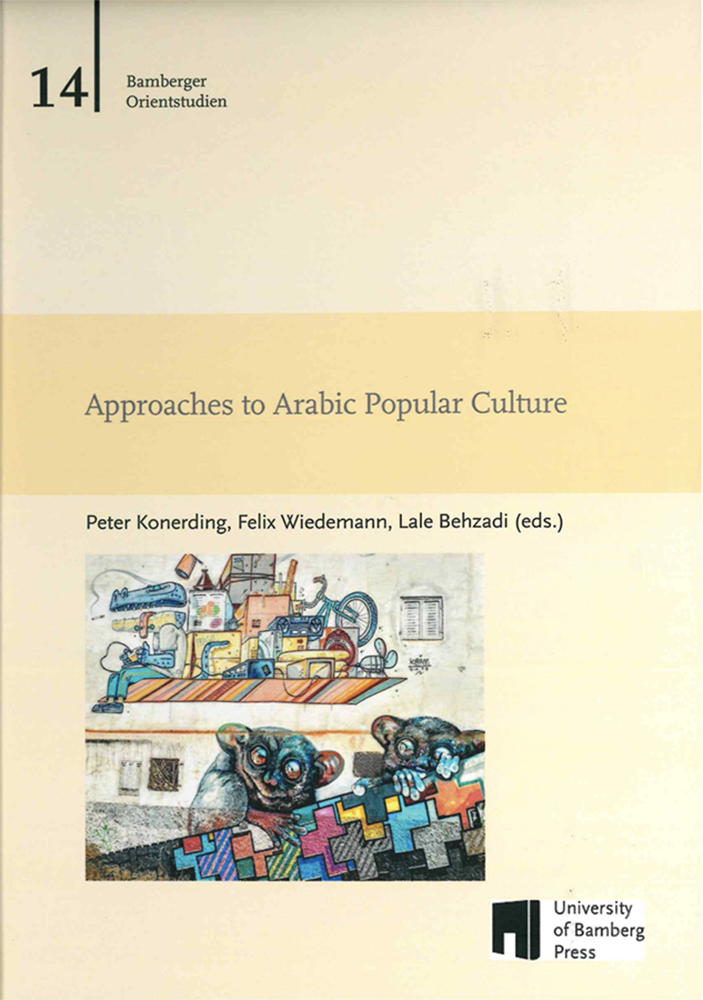 Over recent years, Arabic popular culture has become a focal point of West Asian and North African studies. Most of the new research dealing with it concentrates on the popular´ as opposed to an intellectual high´ culture far from the harsh and hierarchically organized reality many Arabic-speaking societies face today. Popular cultural practices are thus seen as a rejection of the elite and a stance against those who have something to loose´ within paralyzed and conservative communities.
Over recent years, Arabic popular culture has become a focal point of West Asian and North African studies. Most of the new research dealing with it concentrates on the popular´ as opposed to an intellectual high´ culture far from the harsh and hierarchically organized reality many Arabic-speaking societies face today. Popular cultural practices are thus seen as a rejection of the elite and a stance against those who have something to loose´ within paralyzed and conservative communities.
Albeit not denying the subversive political potential associated with these practices, this volume intends to take a more nuanced and broader perspective. Arabic popular culture might engage with emancipatory claims, but it might as easily follow the capitalist rulebook of global marketing. It might fight against oppressive authorities, yet it can equally become their symbol.Approaches to Arabic Popular Culture therefore closely looks at the aesthetic implications of a topic ranging from Lebanese hip hop over Algerian pop novels to jihadi chants in the Islamic State´ as well as from Egyptian mahraganÄt music over sarcastic stories about hash dens and time travel in downtown Cairo to Saudi-Arabian YouTube-influencers. Thus, the theoretical scope widens and the reader is taken on a delightful journey to the unsettling pleasures of contemporary Arabic art and culture. - Publisher's Description
Request this Title
Arab Music: A Survey of Its History and Its Modern Practice
Plenckers, Leo (2021)
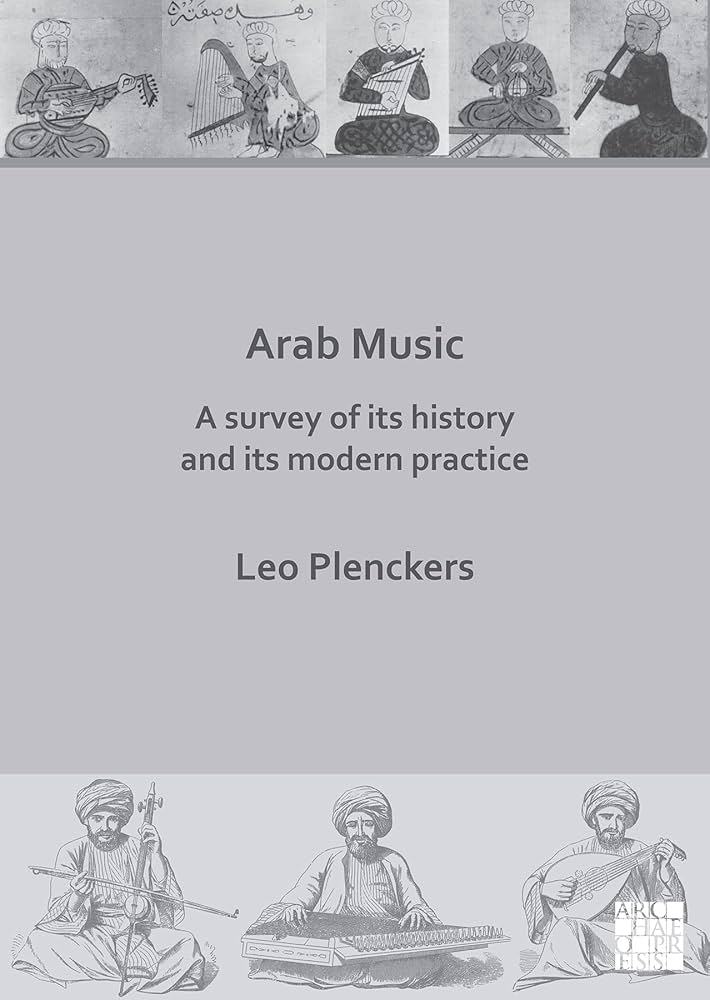 "Arab Music: A Survey of Its History and Its Modern Practice" is primarily meant for the general Western reader with some basic knowledge of music and music notation. It aims at correcting the still prevalent romantic image of Arab music, spread in the 19th century, as exotic and typified by long, plaintive and erotic sounding melodic lines and inciting rhythms.
"Arab Music: A Survey of Its History and Its Modern Practice" is primarily meant for the general Western reader with some basic knowledge of music and music notation. It aims at correcting the still prevalent romantic image of Arab music, spread in the 19th century, as exotic and typified by long, plaintive and erotic sounding melodic lines and inciting rhythms.
It offers the reader a comprehensive survey of the history and the development of Arab music and musical theory from its pre-Islamic roots until 1970, as well as a discussion of the major genres and forms practiced today, such as the Egyptian gil, the Algerian rai and Palestinian hip hop. Other topics touched upon are musical instruments and folk music. The analysis of each genre is accompanied by a complete musical notation of an exemplary composition or improvisation, including lyrics and translation. - Publisher's Description
Request this Title
Medieval Arab Music and Musicians: Three Translated Texts
Reynolds, Dwight (2021)
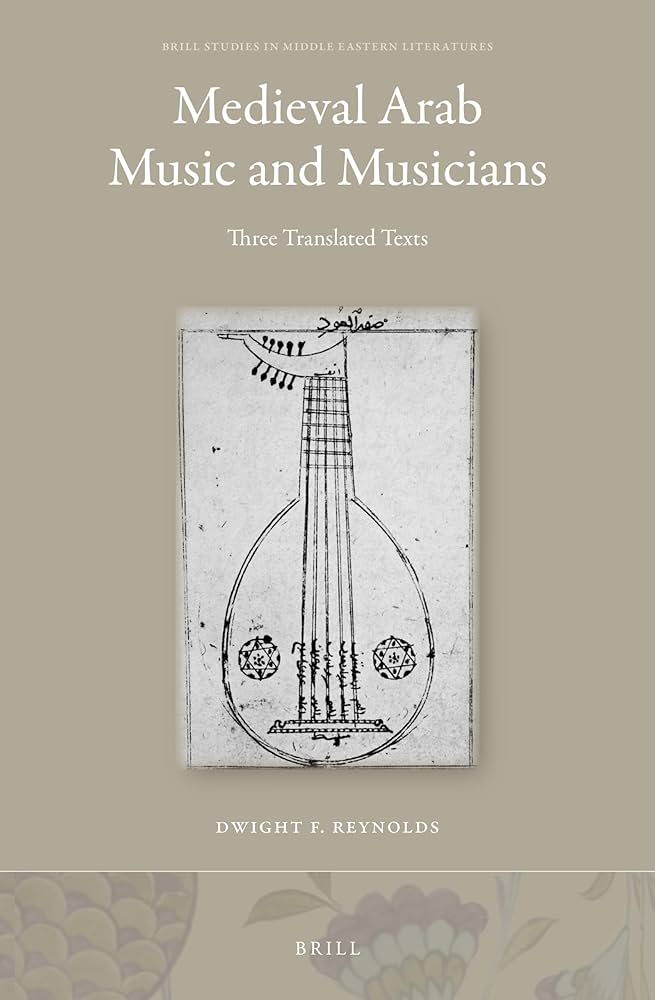 "Medieval Arab Music and Musicians" offers complete, annotated English translations of three of the most important medieval Arabic texts on music and musicians: the biography of the musician Ibrāhīm al-Mawṣilī from al-Iṣbahānī’s Kitāb al-Aghānī (10th c), the biography of the musician Ziryāb from Ibn Ḥayyān’s Kitāb al-Muqtabis (11th c), and the earliest treatise on the muwashshaḥ Andalusi song genre, Dār al-Ṭirāz, by the Egyptian scholar Ibn Sanā’ al-Mulk (13th c).
"Medieval Arab Music and Musicians" offers complete, annotated English translations of three of the most important medieval Arabic texts on music and musicians: the biography of the musician Ibrāhīm al-Mawṣilī from al-Iṣbahānī’s Kitāb al-Aghānī (10th c), the biography of the musician Ziryāb from Ibn Ḥayyān’s Kitāb al-Muqtabis (11th c), and the earliest treatise on the muwashshaḥ Andalusi song genre, Dār al-Ṭirāz, by the Egyptian scholar Ibn Sanā’ al-Mulk (13th c).
Al-Mawṣilī, the most famous musician of his era, was also the teacher of the legendary Ziryāb, who traveled from Baghdad to al-Andalus and is often said to have laid the foundations of Andalusi music. The third text is crucial to any understanding of the medieval muwashshaḥ and its possible relations to the Troubadours, the Cantigas de Santa María, and the Andalusi musical traditions of the modern Middle East. - Publisher's Description
Request this Title
Arabic Glitch: Technoculture, Data Bodies, and Archives
Sakr, Laila Shereen (2023)
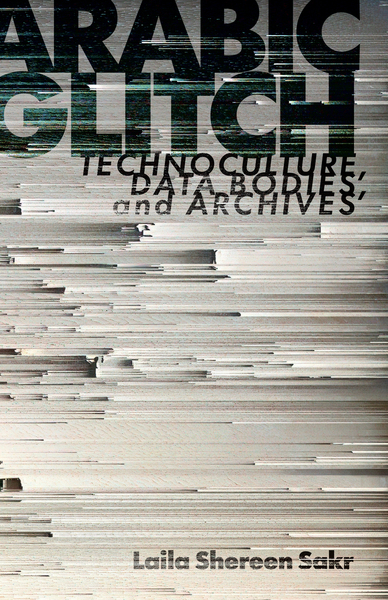 "Arabic Glitch" explores an alternative origin story of twenty-first century technological innovation in digital politics―one centered on the Middle East and the 2011 Arab uprisings. Developed from an archive of social media data collected over the decades following the 2003 U.S. invasion of Iraq, this book interrogates how the logic of programming technology influences and shapes social movements.
"Arabic Glitch" explores an alternative origin story of twenty-first century technological innovation in digital politics―one centered on the Middle East and the 2011 Arab uprisings. Developed from an archive of social media data collected over the decades following the 2003 U.S. invasion of Iraq, this book interrogates how the logic of programming technology influences and shapes social movements.
Engaging revolutionary politics, Arab media, and digital practice in form, method, and content, Laila Shereen Sakr formulates a media theory that advances the concept of the glitch as a disruptive media affordance. She employs data analytics to analyze tweets, posts, and blogs to describe the political culture of social media, and performs the results under the guise of the Arabic-speaking cyborg VJ Um Amel. Playing with multiple voices that span across the virtual and the real, Sakr argues that there is no longer a divide between the virtual and embodied: both bodies and data are physically, socially, and energetically actual. Are we cyborgs or citizens―or both? This book teaches us how a region under transformation became a vanguard for new thinking about digital systems: the records they keep, the lives they impact, and how to create change from within. - Publisher's Description
Request this Title
Between Banat: Queer Arab Critique and Transnational Arab Archives
Shomali, Mejdulene Bernard (2023)
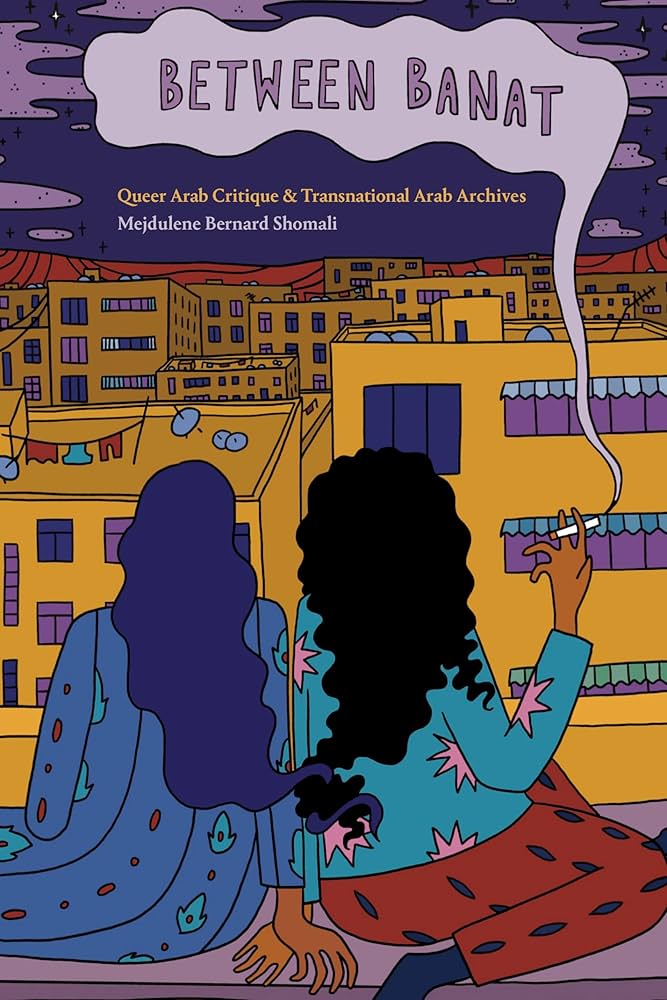 In "Between Banat," Mejdulene Bernard Shomali examines homoeroticism and nonnormative sexualities between Arab women in transnational Arab literature, art, and film. Moving from "The Thousand and One Nights" and the Golden Era of Egyptian cinema to contemporary novels, autobiographical writing, and prints and graphic novels that imagine queer Arab futures, Shomali uses what she calls queer Arab critique to locate queer desire amid heteronormative imperatives. Showing how systems of heteropatriarchy and Arab nationalisms foreclose queer Arab women’s futures, she draws on the transliterated term “banat”—the Arabic word for girls—to refer to women, femmes, and nonbinary people who disrupt stereotypical and Orientalist representations of the “Arab woman.”
In "Between Banat," Mejdulene Bernard Shomali examines homoeroticism and nonnormative sexualities between Arab women in transnational Arab literature, art, and film. Moving from "The Thousand and One Nights" and the Golden Era of Egyptian cinema to contemporary novels, autobiographical writing, and prints and graphic novels that imagine queer Arab futures, Shomali uses what she calls queer Arab critique to locate queer desire amid heteronormative imperatives. Showing how systems of heteropatriarchy and Arab nationalisms foreclose queer Arab women’s futures, she draws on the transliterated term “banat”—the Arabic word for girls—to refer to women, femmes, and nonbinary people who disrupt stereotypical and Orientalist representations of the “Arab woman.”
By attending to Arab women’s narration of desire and identity, queer Arab critique substantiates queer Arab histories while challenging Orientalist and Arab national paradigms that erase queer subjects. In this way, Shomali frames queerness and Arabness as relational and transnational subject formations and contends that prioritizing transnational collectivity over politics of authenticity, respectability, and inclusion can help lead toward queer freedom. - Publisher's Description
Request this Title
Arab Americans in Film: From Hollywood and Egyptian Stereotypes to Self-representation
Mahdi, Waleed (2020)
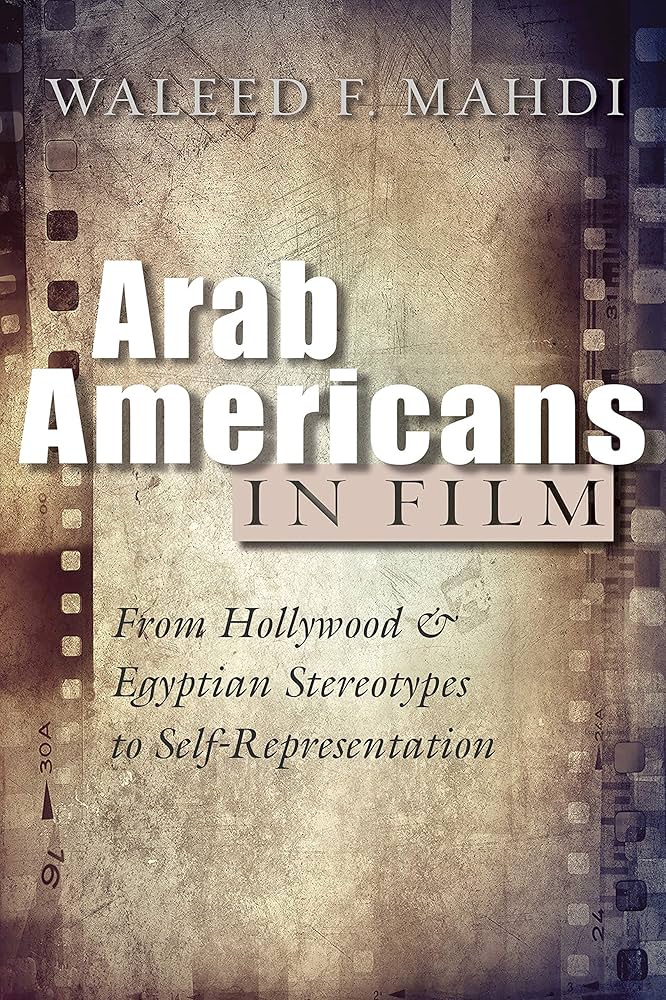 It comes as little surprise that Hollywood films have traditionally stereotyped Arab Americans, but how are Arab Americans portrayed in Arab films, and just as importantly, how are they portrayed in the works of Arab American filmmakers themselves? In this innovative volume, Mahdi offers a comparative analysis of three cinemas, yielding rich insights on the layers of representation and the ways in which those representations are challenged and disrupted.
It comes as little surprise that Hollywood films have traditionally stereotyped Arab Americans, but how are Arab Americans portrayed in Arab films, and just as importantly, how are they portrayed in the works of Arab American filmmakers themselves? In this innovative volume, Mahdi offers a comparative analysis of three cinemas, yielding rich insights on the layers of representation and the ways in which those representations are challenged and disrupted.
Hollywood films have fostered reductive imagery of Arab Americans since the 1970s as either a national security threat or a foreign policy concern, while Egyptian filmmakers have used polarizing images of Arab Americans since the 1990s to convey their nationalist critiques of the United States. Both portrayals are rooted in anxieties around globalization, migration, and US-Arab geopolitics. In contrast, Arab American cinema provides a more complex, realistic, and fluid representation of Arab American citizenship and the nuances of a transnational identity. Exploring a wide variety of films from each cinematic site, Mahdi traces the competing narratives of Arab American belonging—how and why they vary, and what’s at stake in their circulation. - Publisher's Description
Request this Title
Arab American Women: Representation and Refusal
Suleiman, Michael; Joseph, Suad; Cainkar, Louise (2021)
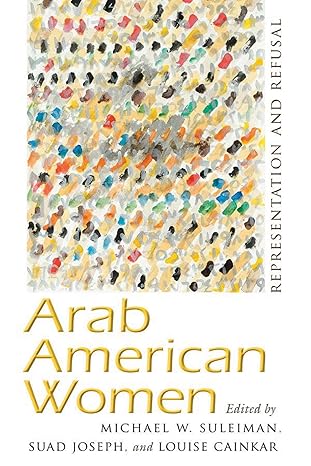 Arab American women have played an essential role in shaping their homes, their communities, and their country for centuries. Their contributions, often marginalized academically and culturally, are receiving long- overdue attention with the emerging interdisciplinary field of Arab American women’s studies.
Arab American women have played an essential role in shaping their homes, their communities, and their country for centuries. Their contributions, often marginalized academically and culturally, are receiving long- overdue attention with the emerging interdisciplinary field of Arab American women’s studies.
The collected essays in this volume capture the history and significance of Arab American women, addressing issues of migration, transformation, and reformation as these women invented occupations, politics, philosophies, scholarship, literature, arts, and, ultimately, themselves. Arab American women brought culture and absorbed culture; they brought relationships and created relationships; they brought skills and talents and developed skills and talents. They resisted inequities, refused compliance, and challenged representation. They engaged in politics, civil society, the arts, education, the market, and business. And they told their own stories. These histories, these genealogies, these narrations that are so much a part of the American experiment are chronicled in this volume, providing an indispensable resource for scholars and activists. - Publisher's Description
Request this Title
An Invitation to Laughter: A Lebanese Anthropologist in the Arab World
Khuri, Fuad Ishaq; Khuri, Sonia Jalbout (2007)
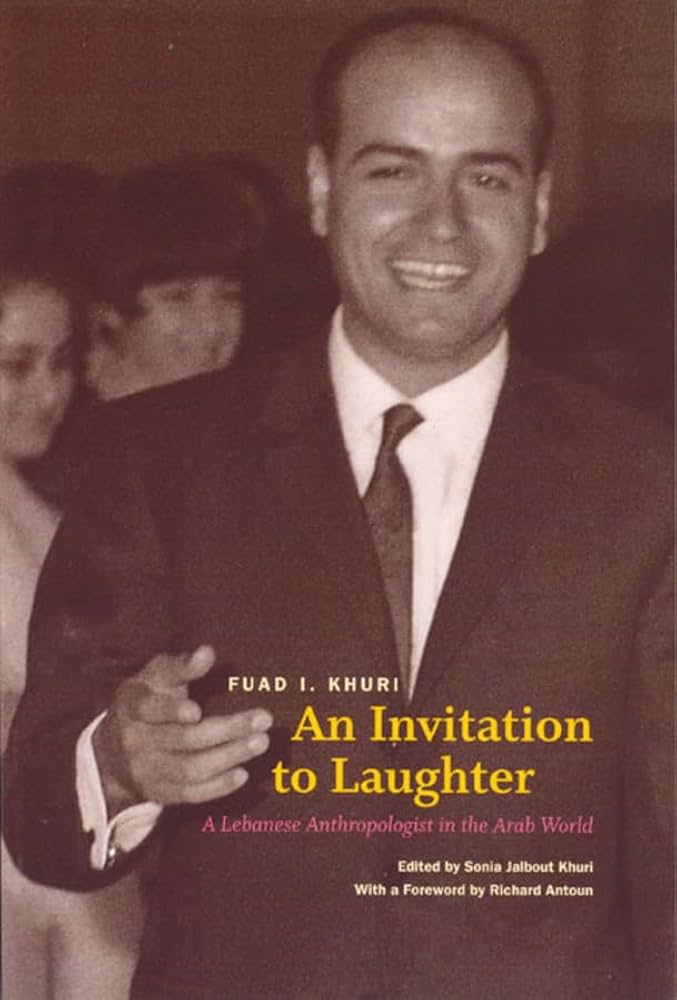 For the late Fuad I. Khuri, a distinguished career as an anthropologist began not because of typical concerns like accessibility, money, or status, but because the very idea of an occupation that baffled his countrymen made them—and him—laugh. “When I tell them that ‘anthropology’ is my profession... they think I am either speaking a strange language or referring to a new medicine.” This profound appreciation for humor, especially in the contradictions inherent in the study of cultures, is a distinctive theme of "An Invitation to Laughter," Khuri’s astute memoir of life as an anthropologist in the Middle East.
For the late Fuad I. Khuri, a distinguished career as an anthropologist began not because of typical concerns like accessibility, money, or status, but because the very idea of an occupation that baffled his countrymen made them—and him—laugh. “When I tell them that ‘anthropology’ is my profession... they think I am either speaking a strange language or referring to a new medicine.” This profound appreciation for humor, especially in the contradictions inherent in the study of cultures, is a distinctive theme of "An Invitation to Laughter," Khuri’s astute memoir of life as an anthropologist in the Middle East.
A Christian Lebanese, Khuri offers up in this unusual autobiography both an insider’s and an outsider’s perspective on life in Lebanon, elsewhere in the Middle East, and in West Africa. Khuri entertains and informs with clever insights into such issues as the mentality of Arabs toward women, eating habits of the Arab world, the impact of Islam on West Africa, and the extravagant lifestyles of wealthy Arabs, and even offers a vision for a type of democracy that could succeed in the Middle East. In his life and work, as these astonishing essays make evident, Khuri demonstrated how the discipline of anthropology continues to make a difference in bridging dangerous divides. - Publisher's Description
Request this Title
The Poetics of Arabian Sūqs: A Hermeneutic Reading of the Development of Arabian Sūqs from the Pre-Islamic Era to Present
Shahin, Jasmine (2023)
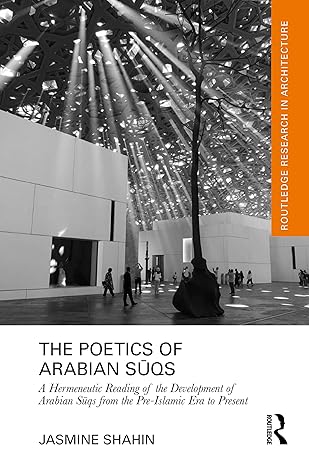 This book investigates the history of Arabian sūqs from their pre-Islamic beginnings to the present.
This book investigates the history of Arabian sūqs from their pre-Islamic beginnings to the present.
Collecting evidence from archaeological ruins, Islamic towns, modern cities, Arabic poetry, philosophical debates, political conflicts, puppet shows and the insights of modern-day market-goers, the book presents new and unforeseen interpretations of the Arabian sūq’s meaning and its transformation through time and place. The finding that such meaning is tied to ancient trade rituals, where temple and market presented a holistic socio-urban unit, re-questions some instrumental assumptions regarding the value of sūq-ness in Arabia’s everyday practices.
Such a finding, which locates the fadaā/tareeq duality as a central theme in Arabia’s socio-urban discourse, emphasizes the importance of lived experiences and poetics as key sources for understanding socio-urban phenomena. - Publisher's Description
Request this Title
Social Media Influencing in The City of Likes: Dubai and the Postdigital Condition
Hurley, Zoe (2023)
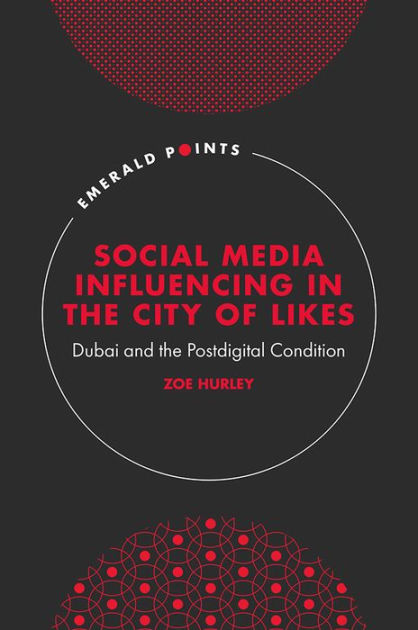 Dubai’s audacious architecture and photographic locations attract social media ‘influencers’ from around the world. How has Dubai, once a small fishing village on the edge of a desert, morphed into a hyper-modern backdrop for this global phenomenon? How can we understand these interactions as our relationships with digital technologies undergo radical change?
Dubai’s audacious architecture and photographic locations attract social media ‘influencers’ from around the world. How has Dubai, once a small fishing village on the edge of a desert, morphed into a hyper-modern backdrop for this global phenomenon? How can we understand these interactions as our relationships with digital technologies undergo radical change?
This timely research-based study reveals how micro-celebrities and Dubai’s visible economies influence the evolution of the Emirate. Taking a cutting edge post-digital approach, underpinned by cultural studies and social media theory, "Social Media Influencing in The City of Likes" presents a series of unique case studies and demonstrates how Dubai is considered not only an illusion of unlimited indulgence but also a city dependent on the emerging infrastructure of visible economies, visual attractions, and ‘Instagrammable’ locations. Evaluating the cases of multiple influencers, from local to transnational content creators, Hurley reveals how residents, non-citizens and migrant workers surviving as influencers in the city of ‘likes.’
Providing a much-needed de-Westernising perspectives of Dubai’s social media influencing industry within the broader context of global platform capitalism, "Social Media Influencing in The City of Likes" offers an important contribution to the field of social media through illustrating visible economies in a city circuited by social media influencing. - Publisher's Description
Request this Title
Arab Animation: Images of Identity
Sayfo, Omar (2021)
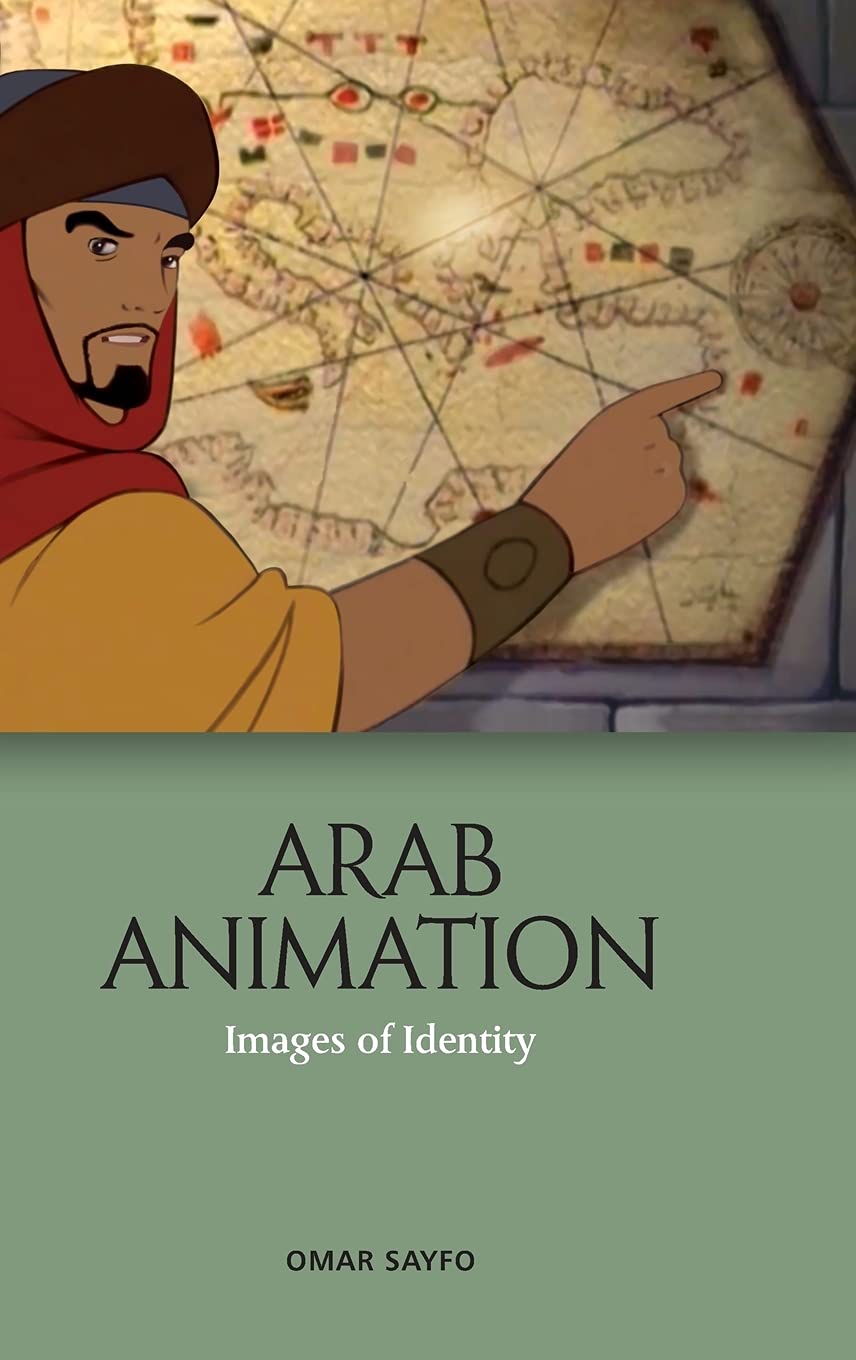 Omar Sayfo textually analyses around 40 animation productions in Algeria, Egypt, Iraq, Jordan, Kuwait, the Palestinian Territories, Qatar, Saudi Arabia, Syria, Tunisia and the United Arab Emirates, from the 1930s until recently. He shows how rival notions of national, pan-Arab and Islamic identities have been advocated, challenged and fused by Arab animated cartoons. - Publisher's Description
Omar Sayfo textually analyses around 40 animation productions in Algeria, Egypt, Iraq, Jordan, Kuwait, the Palestinian Territories, Qatar, Saudi Arabia, Syria, Tunisia and the United Arab Emirates, from the 1930s until recently. He shows how rival notions of national, pan-Arab and Islamic identities have been advocated, challenged and fused by Arab animated cartoons. - Publisher's Description
Request this Title
Folktales from the Arabian Peninsula: Tales of Bahrain, Kuwait, Oman, Qatar, Saudi Arabia, The United Arab Emirates, and Yemen
Taibah, Nadia; MacDonald, Margaret (2015)
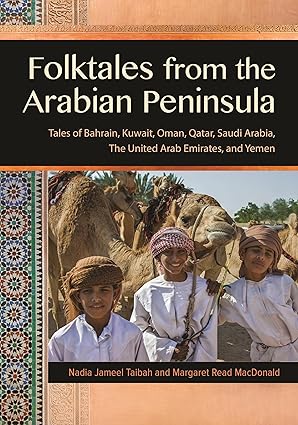 A unique compilation of stories, "Folktales from the Arabian Peninsula" includes tales from seven countries: Bahrain, Kuwait, Oman, Qatar, Saudi Arabia, the United Arab Emirates, and Yemen.
A unique compilation of stories, "Folktales from the Arabian Peninsula" includes tales from seven countries: Bahrain, Kuwait, Oman, Qatar, Saudi Arabia, the United Arab Emirates, and Yemen.
Coauthored by a renowned folklorist and a professor of education who recalls some of these poignant tales from her own childhood, the book opens with a discussion of the Arabian Peninsula that introduces each country and discusses its terrain, peoples, and current situation to provide important background information.
The engaging stories that follow will serve elementary, junior high, and high school librarians as well as public librarians, professional storytellers, and folklorists. The tales themselves―many of which have never been published in English language children's collections―are appropriate for readers grades five and up. - Publisher's Description
Request this Title
Arabs: A 3,000-Year History of Peoples, Tribes and Empires
Mackintosh-Smith, Tim (2019)
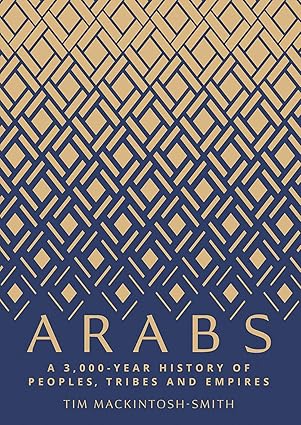 This kaleidoscopic book covers almost 3,000 years of Arab history and shines a light on the footloose Arab peoples and tribes who conquered lands and disseminated their language and culture over vast distances. Tracing this process to the origins of the Arabic language, rather than the advent of Islam, Tim Mackintosh-Smith begins his narrative more than a thousand years before Muhammad and focuses on how Arabic, both spoken and written, has functioned as a vital source of shared cultural identity over the millennia.
This kaleidoscopic book covers almost 3,000 years of Arab history and shines a light on the footloose Arab peoples and tribes who conquered lands and disseminated their language and culture over vast distances. Tracing this process to the origins of the Arabic language, rather than the advent of Islam, Tim Mackintosh-Smith begins his narrative more than a thousand years before Muhammad and focuses on how Arabic, both spoken and written, has functioned as a vital source of shared cultural identity over the millennia.
Mackintosh-Smith reveals how linguistic developments—from pre-Islamic poetry to the growth of script, Muhammad’s use of writing, and the later problems of printing Arabic—have helped and hindered the progress of Arab history, and investigates how, even in today’s politically fractured post–Arab Spring environment, Arabic itself is still a source of unity and disunity. - Publisher's Description
Request this Title
